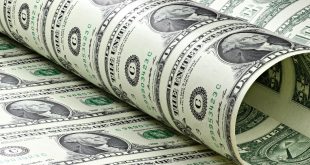The ongoing US government shutdown, now in its third day as of early October 2025, has thrown financial markets into disarray by halting key data releases like September’s Nonfarm Payrolls. This vacuum is amplifying economic uncertainties, particularly as recent Purchasing Managers’ Index (PMI) figures signal slowdowns on both sides of the Atlantic. Yet, amid this chaos, the Pound Sterling has edged higher against the US Dollar, trading around 1.3471. This shift raises a provocative question: could prolonged US disruptions inadvertently bolster the GBP, or are they merely masking deeper global risks? The divergence in central bank approaches offers a compelling case for the former, but it demands a closer look at the implications for markets and policymakers alike.
US Economic Signals Flash Warning Lights
Business activity in the US services sector has stalled, with the ISM Services PMI dropping sharply to a neutral 50.0 in September from 52.0 the previous month—far below economists’ expectations of 51.7. This marks a clear slowdown, compounded by ongoing employment contractions due to hiring delays and talent shortages.
Meanwhile, the S&P Global Services PMI offered a slight counterpoint, rising to 54.2 against forecasts of 53.9, suggesting pockets of resilience. However, the broader picture is one of vulnerability, especially with the shutdown creating a “data gap” that blindsides decision-makers.
Federal Reserve officials have underscored this challenge. Governor Stephen Miran emphasized the critical need for reliable data access, noting that inflation expectations remain well-anchored and estimating the real neutral rate at around 0.5%. Chicago Fed President Austan Goolsbee echoed this data-dependent stance, pointing to internal employment measures tracking unemployment at 4.3%. He highlighted the Fed’s precarious position, balancing deteriorating conditions in both inflation and employment mandates.
Without timely indicators like Nonfarm Payrolls, the Fed faces heightened risks in calibrating policy, potentially leading to missteps that could prolong economic weakness. This isn’t unprecedented—similar data disruptions during past shutdowns, like in 2013 and 2018-2019, delayed recoveries and fueled market volatility. What’s different this time? The post-pandemic economy’s fragility, where even minor delays can exacerbate slowdowns.
UK’s Resilient Stance Amid Slowing Growth
Across the Atlantic, the UK’s services sector grew at its slowest pace in five months, with the S&P Global Services PMI dipping to 50.8 in September from 51.9, undershooting estimates. This deceleration reflects broader headwinds, yet it hasn’t derailed the Bank of England’s steady hand. With inflation at 3.8% year-over-year in August and projected to climb to 4% in September, the BoE is expected to hold rates steady, prioritizing stability over aggressive easing.
This contrasts sharply with the Federal Reserve’s trajectory, where markets anticipate a 25 basis point rate cut at the next meeting to counter weakening activity. Such policy divergence historically favors the higher-yielding currency—in this case, the GBP. Consider the 2019 episode when BoE caution amid Brexit uncertainties propped up Sterling against a dovish Fed; today’s scenario echoes that, but with added shutdown-induced US opacity. The result? GBP/USD has climbed 0.26% recently, bouncing from lows around 1.3427, as traders bet on relative UK strength.
Navigating Uncertainty: What Lies Ahead?
Looking forward, the shutdown’s extension could widen the Fed’s data blind spot, pressuring the USD further and extending GBP gains. If resolved quickly, pent-up data releases might reveal sharper US downturns, accelerating Fed cuts and sustaining this trend. However, global interconnections mean UK vulnerabilities—tied to US trade and energy flows—could quickly reverse fortunes. Persistent inflation in the UK might force BoE action sooner than expected, narrowing the divergence.
Investors and traders should exercise reasonable caution, staying fully informed through official channels as events unfold. In this environment, knee-jerk reactions risk amplifying volatility; instead, a measured approach, grounded in emerging data, will better position portfolios for whatever twists come next. The shutdown isn’t just a US headache—it’s a global reminder that policy precision demands clarity, and its absence could reshape currency dynamics in unexpected ways.
 Noor Trends News, Technical Analysis, Educational Tools and Recommendations
Noor Trends News, Technical Analysis, Educational Tools and Recommendations





